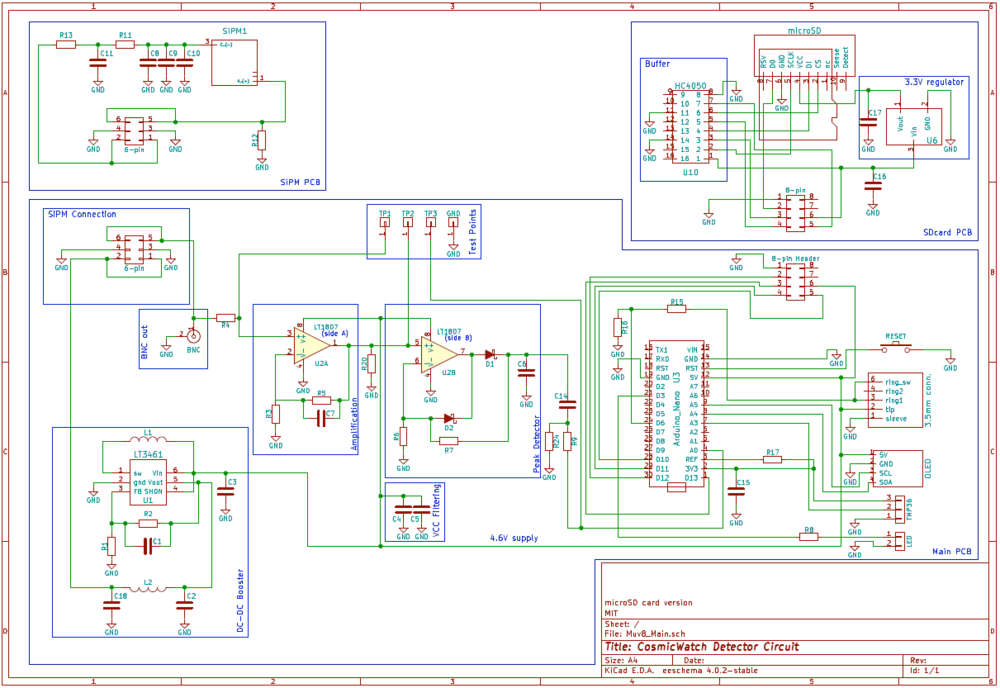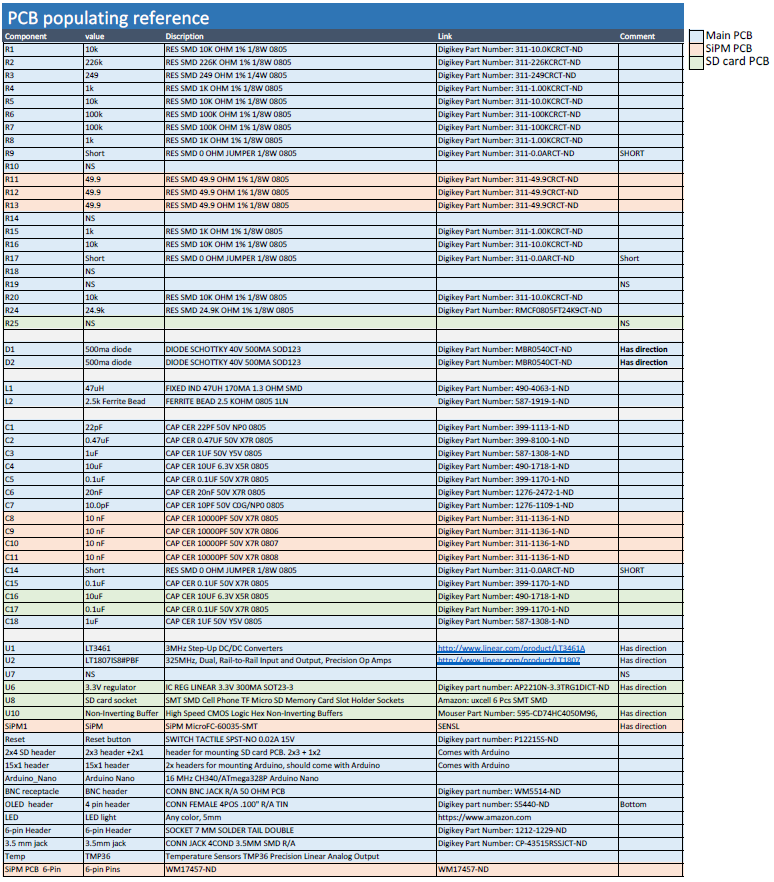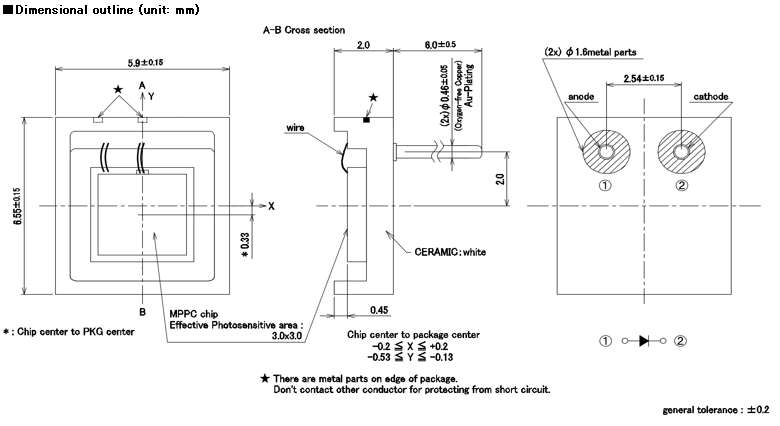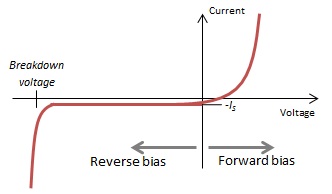SiPMs
SiPMs for use in VULCAN
VUV-sensitive SiPMs (x10): S13370-3050CN, 1804-1830
Visible-sensitive SiPMs (x2): S13360-6075CS
New VUV-sensitive SiPMs (x10): S13370-3050CN, 1909-1919, 2023-04-28
New VUV-sensitive SiPMs (x5): S13370-6050CN, 473-477, 2023-04-28
More visible-sensitive SiPMS (x10): Hamamatsu S13360-6050PE
XAMS SiPMs
Hamamatsu S13370-3050CN sensitive in the VUV region
Data sheet VUV SiPMs S13370 series
Data sheet (sensor specific)
XAMS filter electronics design shown below. This will be used to connect the sensor to a bias source as well as the amplifier to read out the signal.
Sensor troubleshooting
How to connect the sensor
The SiPM has a cathode and an anode as can be seen in the schematic drawing below, the drawing also shows how the SiPM is oriented as a diode. A SiPM needs to be reversed biased, which means the voltage at the cathode is higher than at the anode. This way there is no current flowing until the electric field is so high the SiPM brakes down, the brake down voltages of the used SiPMs is also shown below. Sensor 1804 was already marked as defect, but we still used it to test our electronics just to be sure it worked without breaking a new sensor. This sensor first gave signals which made it seem like it was still working, but after switching around electronics we were not able to get a signal. We therefore decided to check all the used sensors if they are broken. We decided upon the convention of using the wire with an extra bit of kapton for the red/cathode connection and the black/anode connection without any extra kapton.
|
Wanting to check if a sensor is working correct we asked Martin van Beuzekom for the R & D lab to help us and helped us with a method to determine if a sensor is broken. First we wanted to check if the anode and cathode were indeed oriented as was depicted on the schematics. To check this we need to characterize the voltage vs. current. The characteristic graph of how this would look like could be found below. So what we do to check, is connect the SiPM with what we think is the cathode to the positive of the voltage source and the anode to the negative. We then apply a very low (around 0.1 [V]) voltage on the SiPM and increase it in steps of 0.1 [V]. If the diode is broken the current will increase linearly, and when the voltage applied is negative it will be again linear. This implies the diode is just an open connection and thus broken. If when the positive voltage is applied we see an exponential growth in the current we know it is connected in forward biasing mode. We then flip the current and we then expect the current to increase only in the region of the breakdown voltage.
So sensor 1804 gave the linear characteristic, confirming to us it is broken and cannot be used to check our electronics.
Cable impedance and noise
This information about will be discussed in more detail on the page Impedance on cables.
Notes
RAW notes Martin on SiPMs and impedances
Grappa muon electronics
We were able to borrow a SiPM readout board from the muon project. The schematics of the electronics and refrence table can be found below.

|

|
SiPM readout installation
Report on the tested readout electronics can be found here: [1]
Pdf version from Nov22: File:Readout solutions for the vulcan sipms.pdf


